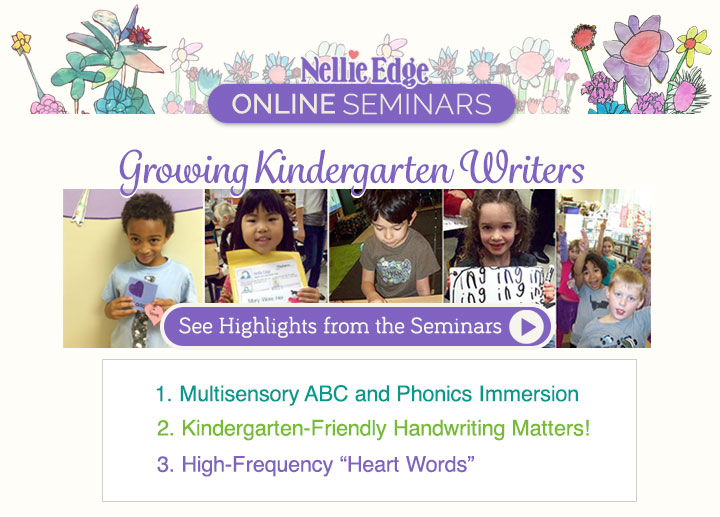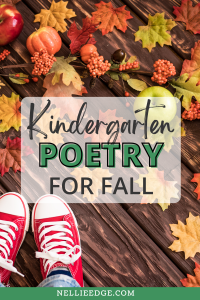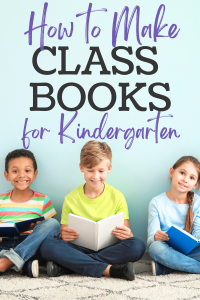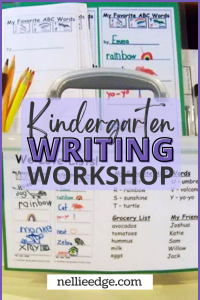Once you get the community right, the levels of learning soar. – Ralph Peterson
The continuing blog series featuring models of excellence in “Growing Kindergarten Writers” through Joyful Pathways to the Common Core
How do we create a high-achieving community of engaged and purposeful writers?
We start with nurturing relationships, high expectations, and a carefully-prepared environment. Here is how one wise kindergarten teacher meets the challenge.
Enjoy Glimpses of Life in Shanda Lung’s Kindergarten

In this Title I school, Shanda makes learning visible, meaningful, and memorable. She has thoughtfully created an environment that invites children to collaborate, develop friendships, and become ambitious writers, readers, and self-directed learners. Shanda cares about the details that build community life: bonding relationships, a program that honors childhood, and multisensory teaching that accelerates literacy.
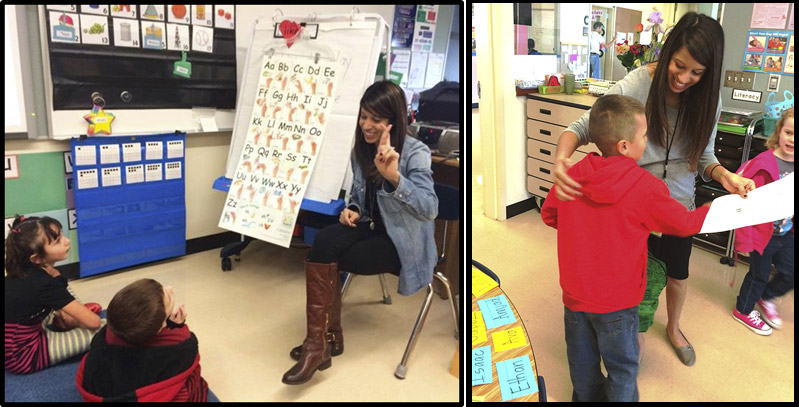
Silent fingerspelling helps children visually integrate ABC and Phonics skills. (If your name begins with 'R,' you may be excused.)
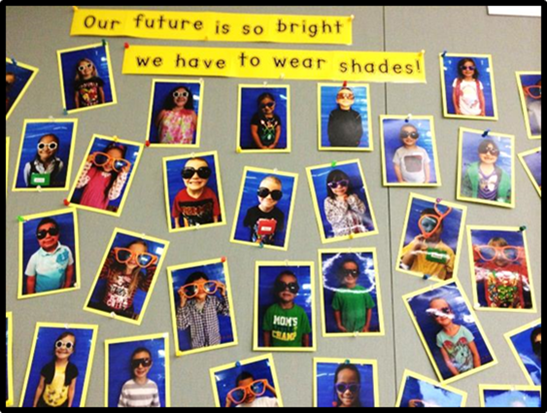

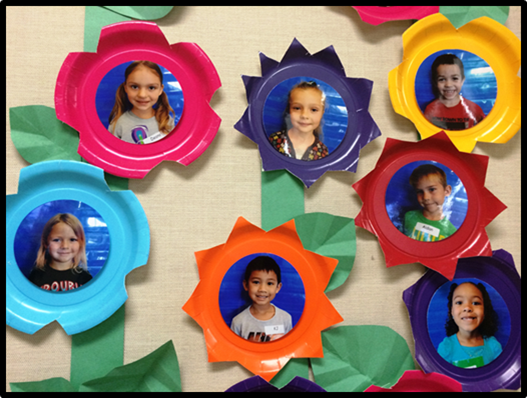
The lives of the children adorn the walls of the classroom. Children and their parents delight in seeing these photos. Outside the kindergarten door is a sign that reflects a deep commitment to the whole child.
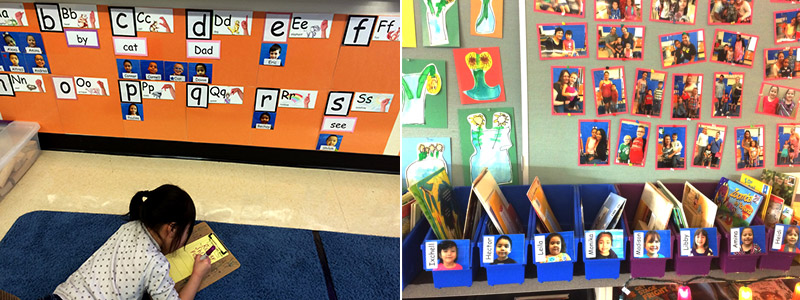
Name/Photo Word Walls and student book bins help children make personal connections with letters, sounds, and names. Parents are Partners in the learning process.
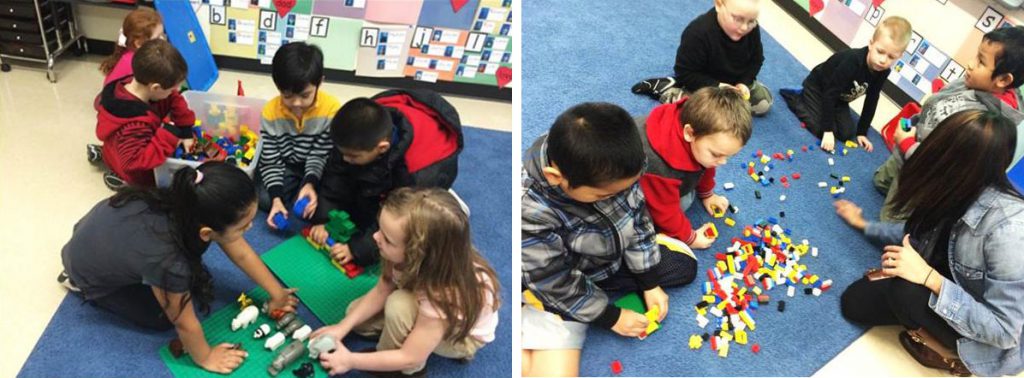
Settling-in activities—first thing in the morning—provide opportunities for children to use language and build friendships while developing fine motor and cognitive skills: Children are expected to write a Name Ticket and practice number writing—before they settle into choice time.
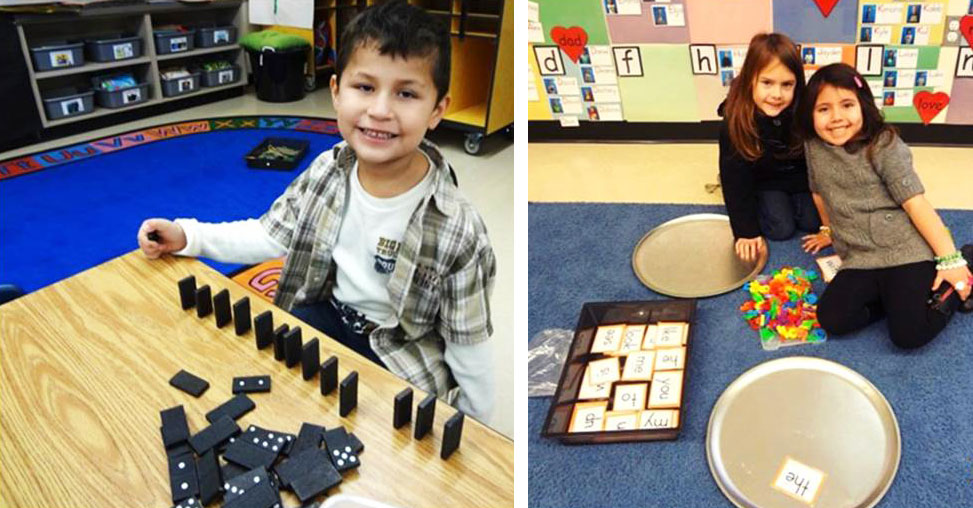
The environment honors kindergarten learners and friends.

Instructional Assistants play a key role in this Comprehensive Writing Program. Student writing workshop folders are easily accessible, and there is a consistent plan for daily writing workshop. Mini-lessons feed into workshop time; children have choice of topic within Narrative, Opinion and Information writing studies. Students are expected to spell a growing collection of high-frequency “heart words” conventionally and to use phonics-based spelling to tackle unknown words.
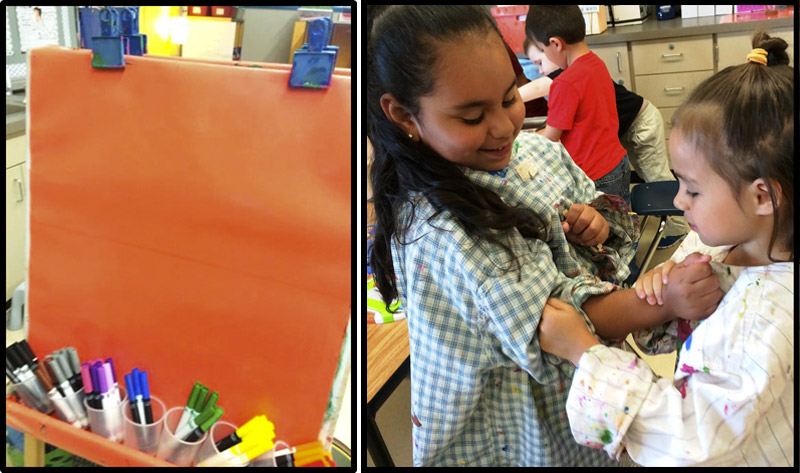
One side of the easel has marking pens; the other side has paints. Children learn how to help each other. They independently take down paintings and lay them on the drying rack below the easel.
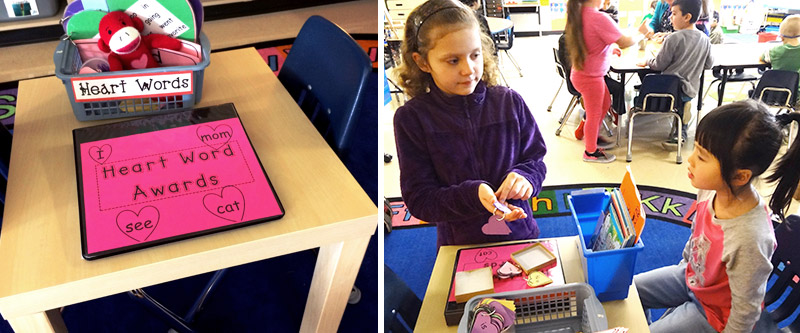
We have high expectations for children to learn mastery of two kinds of words: high-frequency “heart” words and words they listen to, stretch out, and write the sounds for. This center is set up for children to practice their next set of “heart words,” often with a fourth grade reading buddy. Success is documented in the “heart word” awards book.
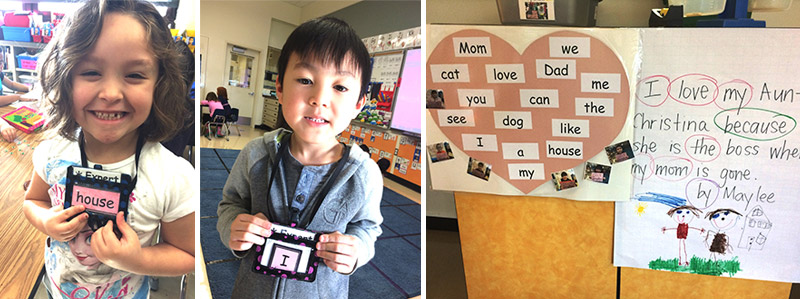
Every child gets to be an expert at new “heart words.” These high-frequency sight words are reinforced throughout the curriculum. Crystal clear learning targets of 16 pink, purple, yellow, and green “heart words” keep learning motivation high.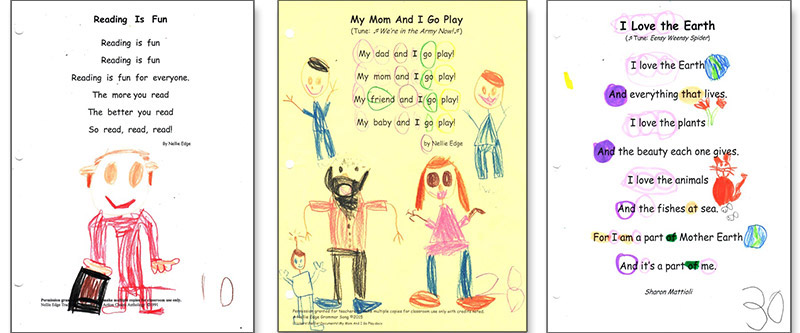
Oral language fuels the curriculum: Children memorize, recite, and illustrate personal “I Can Read” pages of songs, poems, and rhymes. Differentiated learning provides challenge for more proficient learners.

This Comprehensive Writing Program is NOT a prescriptive one-size-fits-all curriculum. It is a dynamic personalized writing model where all students have the scaffolding to be successful. Children use writing for real purposes: They write messages to friends, and they learn how to draw and make books.
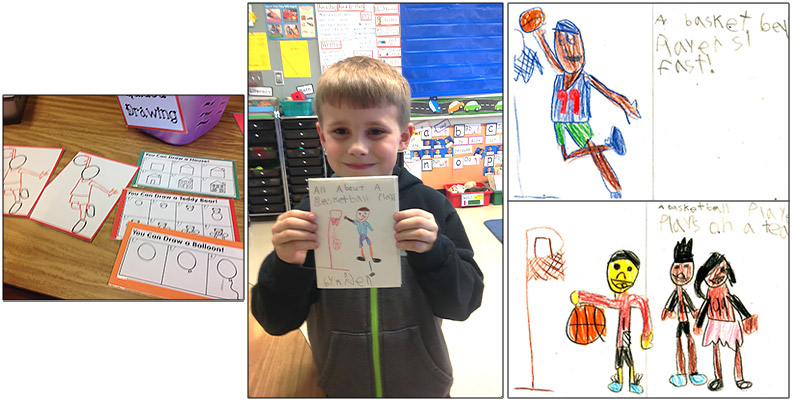
After a unit on information writing, this boy was inspired to create his own book, All About a Basketball Player by Aiden. His teacher found guided drawing models to support his passion for basketball.
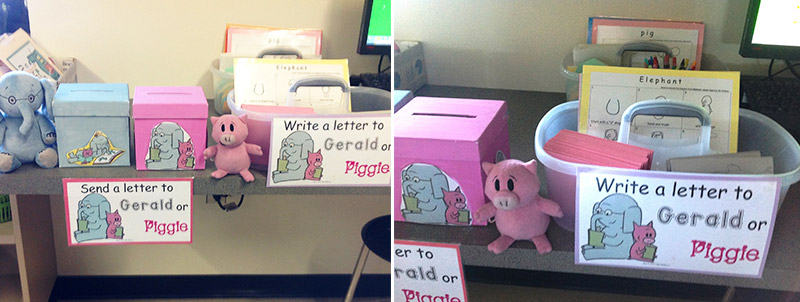
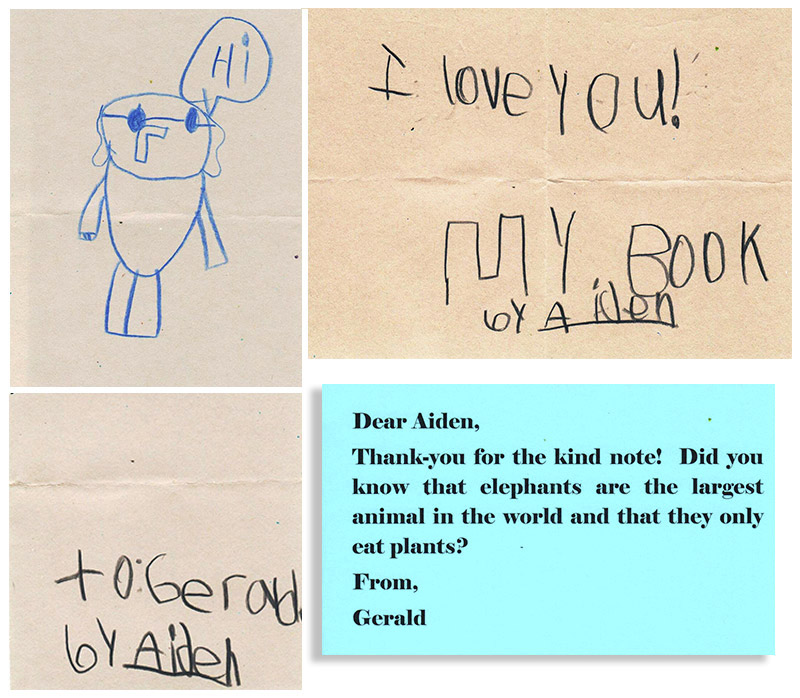

Literature studies from Mo Willems’ Elephant and Piggie books inspire children to write letters. And surprise—Elephant and Piggie write back!
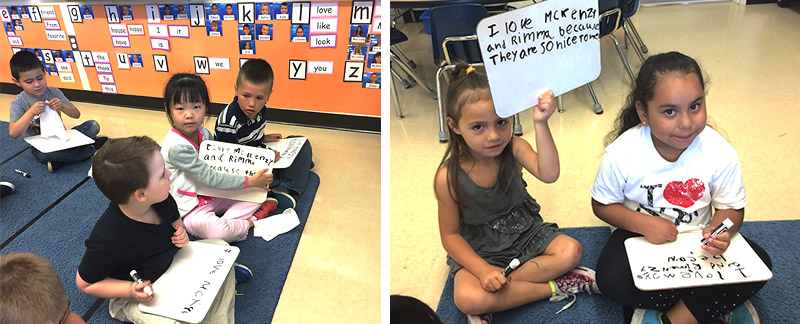
Kindergartners grow as engaged and confident writers—they build fluency using high-frequency “heart words” and proficiency using phonics. The rich social learning context motivates and supports this thriving community of kindergarten writers.

Writing Workshop is where the children daily have choice of topic and engage in writing as a thinking process.
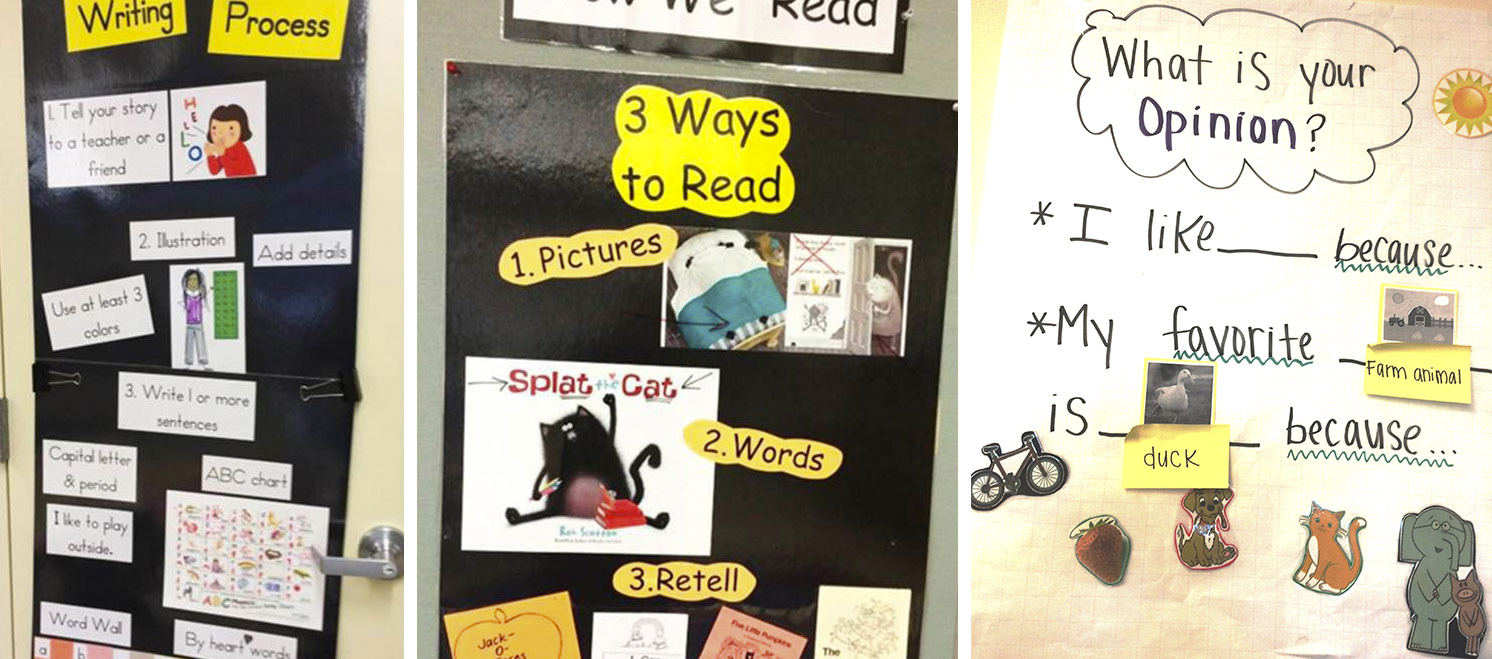
The Writing Process, 3 Ways to Read, and Opinion Writing and are captured in these anchor charts. (Note: children learn to sing, sign, and spell “because” and “favorite.”)
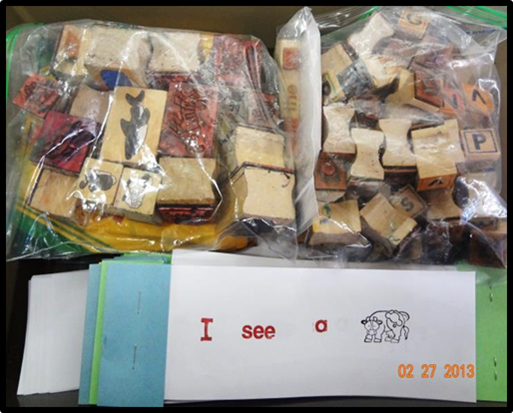
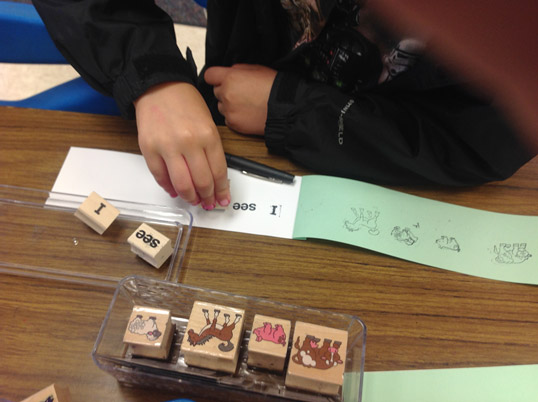
Careful planning with high-frequency word and animal stamps allows children to make “Stamp and Read Skinny Books” early in the year. We give children “I can read” experiences.
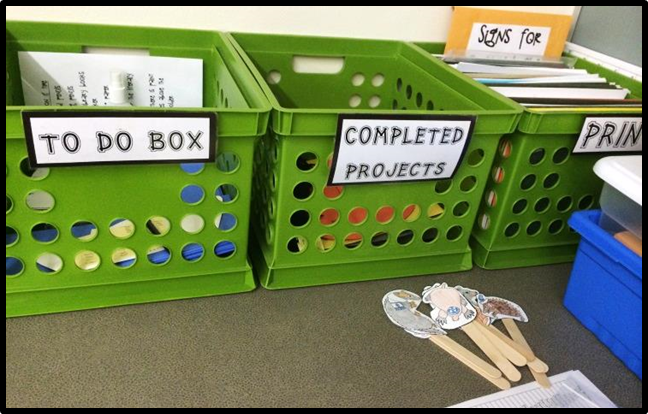
Thoughtful, detailed organization allows Shanda to use volunteer time most effectively.
A Carefully Prepared Environment Facilitates Learning
The study of butterflies and metamorphosis inspires information writing, book making, and art

Information writing begins with close observation and culminates in a guided writing book. Common Core Information Writing strengthens Next Generation Science Studies.
Studies from the natural world and easel painting are favorite parts of kindergarten life
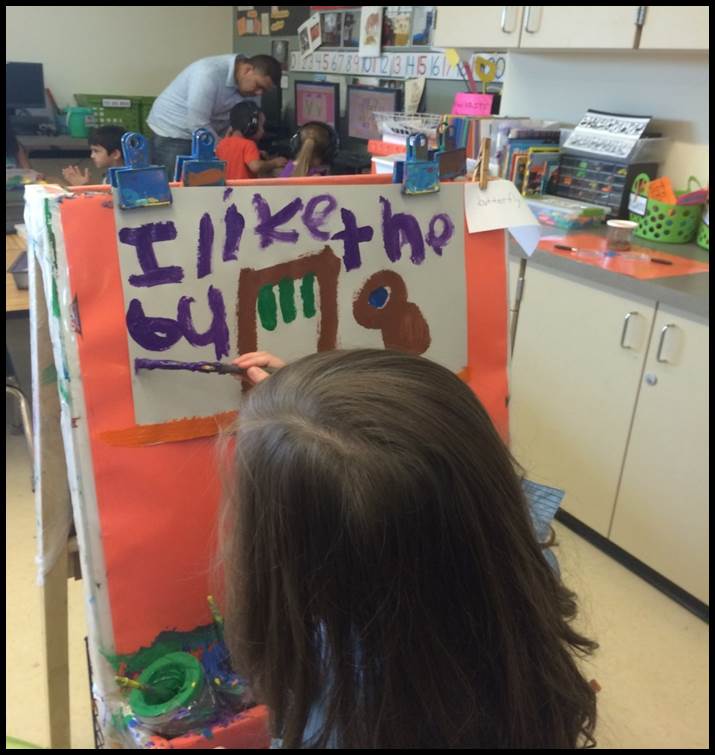
Painting, writing, creating things… it’s all part of the quality kindergarten experience…it’s all part of how our Comprehensive Writing Model grows proficient kindergarten writers and meets the vision for The “Every Child Succeeds Act” (ECSA).
Is this blog article helpful? If you have comments or questions, please leave them below and I will be happy to respond. (Originally posted by Nellie Edge on August 20, 2014. Revised August 2016.)
Learn more about these High-Impact Writing Strategies:
Study Nellie Edge Online Seminars
3 Foundation Seminars for $39 each
(individually $59)


